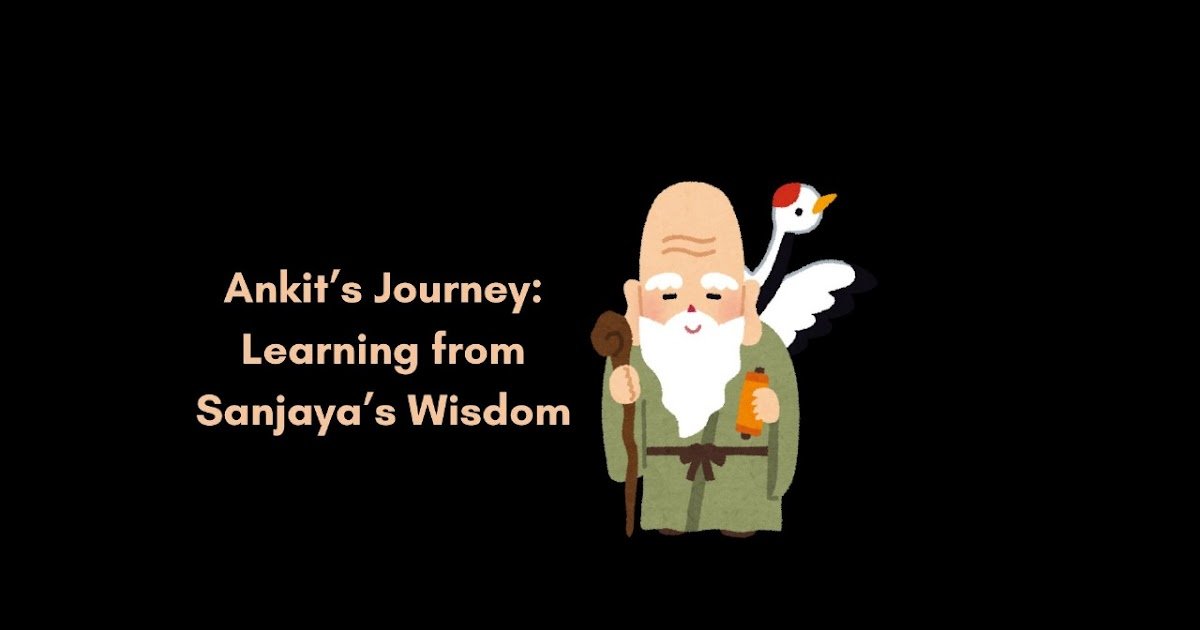The Tale of Ankit and Her Challenges
Ankit was an exceptionally talented journalist at a well-known media organization. She had always been driven to reveal the truth and present unbiased information to the public. However, as she advanced in her career, she encountered a moral quandary. The organization she worked for was not entirely transparent—its stories were frequently swayed by political and corporate agendas.
Ankit was aware that certain narratives she was instructed to convey did not reflect reality. Nevertheless, her loyalty to her employer trapped her. Leaving was simply not feasible—her financial commitments and years of dedication made it unthinkable. Caught between her moral duties and professional expectations, Ankit felt adrift.
One day, she discovered the story of Sanjaya from the Mahabharata. His experiences resonated with her, prompting her to see similarities between his circumstances and her own. Sanjaya, while serving the blind King Dhritarashtra—who supported the unjust Kauravas—opted to maintain his loyalty without causing harm. He leveraged his divine insight to share the Bhagavad Gita with the world, ensuring that Lord Krishna’s wisdom would illuminate future generations. Inspired by his insight, Ankit resolved to carve her own path within the framework of her job.
The Tale of Sanjaya
Sanjaya (Sanskrit: सञ्जय, translating to “victory”) is a pivotal figure in the epic Mahabharata. Amidst the monumental conflict between the Pandavas and the Kauravas, Sanjaya served as a trusted advisor and charioteer to King Dhritarashtra, the blind monarch of Hastinapura and father to the Kauravas. An ardent disciple of Sage Krishna Dwaipayana Vyasa, Sanjaya remained steadfastly devoted to Dhritarashtra, providing counsel and wisdom. A concise overview of the Mahabharata and the Bhagavad Gita can be found in my previous blog.
Sanjaya’s essential function in the Mahabharata was that of an observer and storyteller. Gifted with divine perception by Vyasa, he possessed the unique ability to witness the battlefield’s events from a distance. Through his narration, Dhritarashtra remained aware of the Kurukshetra conflict. It is also through Sanjaya’s storytelling that we come to understand how Lord Krishna conveyed the principles of Dharma (duty) to Arjuna in the Bhagavad Gita.
At the war’s outset, Arjuna experienced a profound moral and emotional crisis. Overwhelmed by grief and doubt, he discarded his weapons and sank onto his chariot, unable to reconcile his duty as a warrior with fighting against his own family. Lost in despair, he confessed that he couldn’t find resolution to his internal struggles.
In search of clarity, Arjuna sought Krishna’s counsel, who encouraged him to fulfill his duty as a warrior and uphold Dharma through selfless actions. Krishna guided Arjuna from the shadows of avidya (ignorance) towards the enlightenment of jnana (knowledge). Once Arjuna’s doubt and confusion were cleared, his transformation is eloquently expressed in this verse from the 18th chapter of the Bhagavad Gita:
Arjuna said:“O infallible one, through your grace, my delusions have vanished, and I am grounded in knowledge. My uncertainties have dissipated, and I will act according to your guidance.”
At this juncture, Sanjaya transitions from a mere narrator to a voice of reflection. Importantly, Sanjaya speaks in forty-one verses of the Bhagavad Gita, primarily providing battlefield commentary and conveying Krishna and Arjuna’s conversations to Dhritarashtra. However, from this verse onward, he shares his personal insights—indicating the start of one’s journey of learning and comprehension.
Ankit’s Evolution
Ankit came to understand that, akin to Sanjaya, she could remain in her role while preserving her principles. She chose to document the truth in ways that would eventually resonate with people, even if she could not overtly oppose the system.
Rather than following directives without question, she mastered the skill of active listening, just as Sanjaya had. She attentively considered various viewpoints, gathering insights that might prove crucial over time.
She cultivated a sense of gratitude, acknowledging that despite her job’s constraints, she had a platform that she could utilize effectively.
Crucially, she embraced a philosophy of continuous learning. Under a pseudonym, she started writing, sharing impartial articles and insights that transcended mainstream narratives.
Sanjaya teaches us about the possibility of loyalty without complicity in misconduct. Upholding integrity doesn’t always necessitate open defiance—sometimes, it involves wisely leveraging one’s position to fulfill a greater purpose. Ankit’s journey serves as a reminder that even in trying situations, we can discover ways to uphold dharma through knowledge, patience, and determination.

